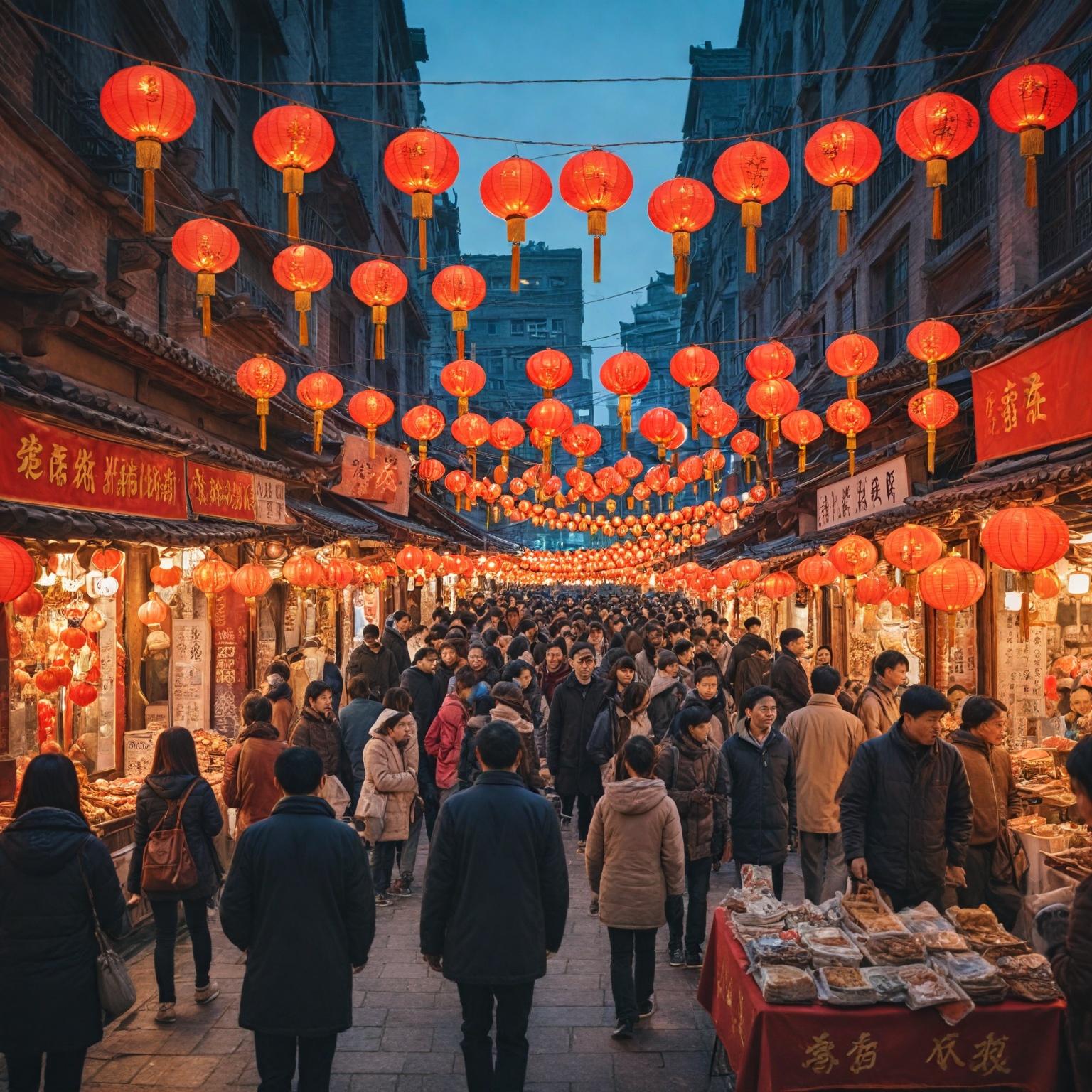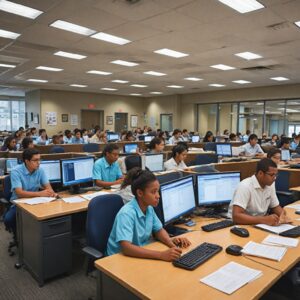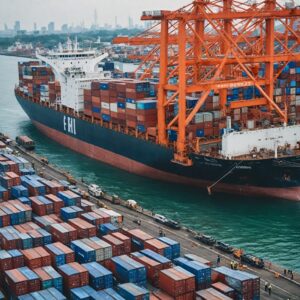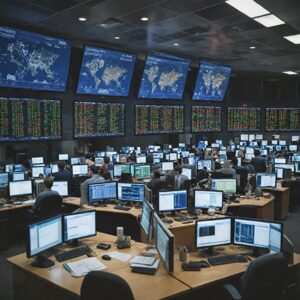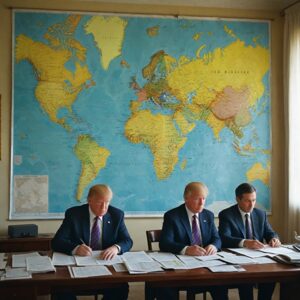Summary
**Unveiling the Truth: China’s Labor Day Travel Boom Sparks Economic Speculation Among Netizens** explores the remarkable surge in travel and tourism activity during China’s 2023 Labor Day holiday, highlighting its significance as a key indicator of economic recovery following the lifting of stringent COVID-19 restrictions. Traditionally observed on May 1st, Labor Day in China has evolved from a one-day workers’ celebration into an extended holiday period marked by widespread domestic and international travel, cultural events, and economic activity. The 2023 holiday saw domestic tourism not only fully rebound but surpass pre-pandemic levels, with an unprecedented increase in travel bookings, extended trip durations, and a marked rise in spending across urban and rural areas.
This travel boom contributed substantially to China’s tourism sector revenue, projected to exceed RMB 4 trillion (approximately US$580 billion) in 2023, and supported job growth in related industries such as transportation, hospitality, and car rentals. The surge was driven by a combination of government policy reforms—such as extended holiday periods through weekend adjustments—and the easing of pandemic-related travel restrictions, enabling a freer flow of travelers both domestically and to neighboring Asian countries. However, outbound tourism to long-haul destinations like Europe and North America remained constrained by limited flight availability and labor shortages, with full recovery expected only by 2025.
Despite optimistic official reports and state media framing the holiday travel boom as a robust sign of economic revival, the phenomenon has sparked significant controversy and skepticism among Chinese netizens and independent observers. Social media discussions revealed concerns over a disparity between government data and lived realities, with many travelers describing “having holidays but no budget” and opting for more economical travel options amid ongoing financial pressures. Regional reports noted weaker-than-expected consumer sentiment in shopping and leisure venues, and authorities issued warnings to manage online narratives amid public dissatisfaction.
Experts view the Labor Day travel surge as a meaningful but complex economic indicator—signaling strong recovery in domestic consumption and tourism but tempered by structural challenges including transportation bottlenecks and uneven income growth. The government’s active role in reforming holiday policies and promoting tourism is seen as pivotal to sustaining this momentum, though ongoing scrutiny of data transparency and socioeconomic impacts continues. Ultimately, the 2023 Labor Day travel boom serves as both a symbol of China’s post-pandemic rebound and a focal point for broader debates over economic sustainability and public perception in the country’s evolving social landscape.
Background
Labor Day in China, also known as International Worker’s Day, is a public holiday dedicated to celebrating the contributions of workers to the country. Unlike many traditional Chinese holidays that follow the lunar calendar, Labor Day is observed on May 1st according to the Gregorian calendar. The holiday was officially established shortly after the founding of the People’s Republic of China in 1949 by the Government Administration Council of the Central People’s Government. Initially, it was a one-day holiday, but over time its observance has undergone various changes.
Labor Day is traditionally a time for family gatherings and leisure activities. Popular pastimes include walking in parks to enjoy the spring scenery, attending live music performances featuring bands and DJs, and participating in parades with colorful floats and marching bands to honor workers and Chinese history. This festive atmosphere encourages both local residents and travelers to engage in cultural and recreational events.
In recent years, Labor Day has also become a major travel period. The holiday season sees a significant increase in travel duration, often extending beyond 10 days, which contributes to the rising popularity of long-haul destinations such as the United Kingdom, Canada, and the United States among Chinese tourists. The 2023 Labor Day holiday marked a pivotal moment as it was the first national holiday after the lifting of COVID-19 restrictions in late 2022 during which domestic travel fully rebounded and even surpassed pre-pandemic levels. This resurgence in travel activity demonstrated a strong recovery in China’s tourism and travel industries, with spending and movement exceeding those of 2019. While international travel also increased considerably compared to previous years, it had yet to reach the levels seen before the pandemic.
Despite the widespread return to travel, some visitors still showed caution; for example, a report from Foshan City in Guangdong Province during the 2023 Labor Day holiday noted that only about a quarter of visitors in a long queue at a local museum were wearing masks, reflecting lingering concerns from the pandemic. Overall, Labor Day has evolved into both a cultural celebration and a significant driver of domestic and international travel in China.
The 2023 Labor Day Travel Boom
The 2023 Labor Day Holiday marked a significant milestone in China’s travel and tourism recovery following the lifting of COVID-19 restrictions in late 2022. Domestic travel rebounded strongly, not only reaching but surpassing pre-pandemic levels, signaling a robust recovery of the sector. Travel bookings for the Labor Day period surged by 470 percent compared to 2022, highlighting an intense demand for travel during this holiday.
A notable feature of the holiday was the increase in longer trips, with holidays lasting more than 10 days becoming more common. This trend contributed to the growing popularity of long-haul destinations such as the UK and Canada, with the U.S. ranking as the second most popular outbound destination during this period. Despite this surge, outbound travel overall had yet to fully return to pre-pandemic levels, though certain regions were already benefiting from the reopening of China’s borders.
Domestic travel was the primary driver of the boom. Car rental orders increased by an extraordinary 574 percent year-on-year, with cross-city pickup and return bookings rising by 137 percent, suggesting that travelers were venturing farther on self-driving tours. The total domestic trips during the extended holiday periods, such as the Chinese New Year, also demonstrated a strong upward trajectory, with 474 million trips made in a comparable period earlier in 2023—a 34.4 percent increase from the previous year and 19 percent above 2019 levels. Traditional transportation modes, including railways, civil aviation, and waterways, played a critical role in facilitating this travel surge.
The destinations chosen by travelers reflected diverse preferences influenced by seasonal and regional factors. “Ice and snow” scenic spots like Harbin and Shenyang attracted visitors from warmer southern provinces seeking winter activities, while southern coastal destinations such as Sanya, Haikou, and Guangzhou appealed to northern tourists looking to escape colder climates. Among outbound travelers, nearby Asian countries were the favored destinations, accounting for nearly 70 percent of intended trips. Popular spots included Hong Kong, Macao, Singapore, Phuket, Seoul, Tokyo, Kuala Lumpur, Osaka, and Taipei.
Economically, the travel boom translated into significant revenue growth. Domestic tourism revenue in the first half of 2023 reached RMB 2.3 trillion (approximately US$318 billion), an increase of RMB 1.12 trillion (US$155 billion) compared to the previous year. Urban residents’ travel spending surged by 108.9 percent year-on-year, while rural spending grew by 41.5 percent. This rebound has supported income growth and employment in the domestic tourism sector.
Despite the positive indicators, challenges remain. Limited flight availability and labor shortages could slow the full recovery of outbound tourism, with experts predicting that pre-pandemic outbound travel volumes may not return until 2025. Transportation infrastructure remains a critical bottleneck, as restoring air capacity takes time.
The pace and intensity of travel during the holiday have also drawn cultural commentary. Chinese travelers were described as “traveling like special-forces soldiers,” reflecting a desire to maximize sightseeing opportunities after years of restricted movement. However, contrasting reports noted that consumer sentiment in some shopping and leisure venues was weaker than expected, with cost-conscious travelers favoring more affordable options, suggesting that the travel boom’s economic impact may be uneven across sectors.
Economic Impact
China’s Labor Day holiday in 2023 has been marked by a significant surge in travel and consumption, generating considerable economic activity and sparking debate over the sustainability of the recovery. Domestic tourism revenue experienced a remarkable rebound, with projections estimating total revenue to exceed RMB 4 trillion (approximately US$580.96 billion), representing a 96 percent growth from the previous year. In the first half of 2023 alone, domestic tourism spending reached RMB 2.3 trillion (about US$318 billion), an increase of RMB 1.12 trillion (around US$155 billion) compared to 2022. Urban residents’ travel expenditures surged by 108.9 percent year-on-year, while rural residents’ spending grew by 41.5 percent.
The rapid expansion of domestic travel was also evident in specific sectors, such as car rentals, which saw a 574 percent year-on-year increase during the holiday. Cross-city vehicle pickup and return bookings grew by 137 percent, indicating longer self-driving tours. Meanwhile, demand for travel to nearby Asian destinations has rebounded strongly, with nearly 70 percent of outbound trips during the Labor Day holiday targeted at Southeast Asia and popular locations including Hong Kong, Macau, Singapore, and Tokyo. This resurgence is expected to benefit travel-related businesses not only in China but also across Asia, particularly in regions that heavily depend on Chinese tourists.
Despite the encouraging numbers, economists and market observers caution that the current consumption boom may not fully represent a robust or lasting economic revival. Some netizens have contrasted the apparent “boom in spending” reported by state media with their lived experience of being “on holiday but without funds,” highlighting a more nuanced reality of economic strain among middle and lower-income groups. Additionally, challenges such as limited flight availability and labor shortages in the tourism industry continue to constrain the full recovery of outbound tourism, with pre-pandemic levels not expected to return until 2025.
The central government has taken active measures to support tourism growth, including improving consumption environments and regulating tourist sites to enhance visitor experience during the holiday period. The surge in tourism is also anticipated to stimulate employment and income growth in domestic travel agencies and related sectors. Overall, while the Labor Day travel boom offers a positive sign for China’s economic momentum in 2023, its durability will depend on factors such as sustained income growth, consumer confidence, and the resolution of structural bottlenecks in transportation and labor supply.
Public Perception and Media Coverage
During the 2023 Chinese Labor Day holiday, official reports highlighted a significant surge in domestic travel and consumer spending, with figures exceeding those of the pre-pandemic period in 2019. State media portrayed this as a clear sign of economic revival, emphasizing a “boom in consumption” and an optimistic outlook for the country’s economic development. The Global Times, for instance, praised the “twin boom in travel and consumption” as an indicator of China’s vast economic potential. Likewise, government data suggested that consumer activity during the holiday would strongly drive growth in sectors such as catering, accommodation, and transportation in the second quarter.
However, these positive portrayals have been met with skepticism and criticism from many Chinese netizens and independent observers. Social media platforms like Weibo, despite being heavily censored, became venues for expressing doubts about the authenticity of the official data amid ongoing economic challenges. Users highlighted the contrasting reality faced by middle and lower-income groups, describing a situation of “having holidays but no budget,” which sharply contradicted the official narrative of robust consumer spending. This sentiment was exemplified by the increased search interest in “green trains” during the May Day holiday, indicating a preference for cheaper, albeit slower, travel options over the costlier high-speed rail.
Further reports from regional sources suggested that consumer sentiment and market activity during the holiday were weaker than official accounts implied. Once-busy shopping areas reportedly experienced lower foot traffic, and many travelers opted for more economical choices due to financial constraints. These observations were supported by warnings issued by provincial law enforcement and state media, reflecting concerns about the disparity between reported economic vitality and on-the-ground realities.
Economists have also weighed in, cautioning that the spike in holiday consumption should not be interpreted as definitive evidence of a sustained economic recovery. Despite the encouraging travel and spending data from both the Labor Day and Lunar New Year holidays, broader economic indicators such as export declines and persistent financial pressures suggest that the underlying economy remains fragile. Consequently, while the holiday period showcased a momentary revival in activity, experts emphasize the need for cautious analysis before concluding that China’s economy has fully rebounded.
Government Response and Policy Measures
The Chinese government has implemented a series of reforms and policy adjustments aimed at optimizing the public holiday system to stimulate domestic tourism and leisure activities. These reforms are informed by data from multiple sources, including McKinsey’s Survey of Chinese Tourist Attitudes and consumer sentiment research conducted between April 2020 and November 2022. Key measures include the strategic shifting of weekends to create extended holiday periods, often extending three- or four-day holidays into seven- or eight-day breaks by requiring work on adjacent weekends. This approach allows citizens to enjoy longer continuous leisure time while maintaining overall productivity.
In response to the evolving pandemic situation, China lifted cross-city travel restrictions, border closures, and quarantine requirements on international arrivals by early January 2023. This reopening was accompanied by ten to twenty new measures optimizing the COVID-19 response, signaling a shift away from the zero-COVID policy. The easing of travel restrictions has enabled a remarkable recovery in domestic tourism, with travel during the 2023 Labor Day holiday surpassing pre-pandemic levels, marking the first national holiday since the restrictions were lifted where domestic travel fully rebounded.
These policy changes have not only facilitated increased domestic travel but also contributed to the growth of rural tourism and the reconstruction of historic sites, further enriching the tourism landscape within China. Additionally, the government’s adjustments support the design of personalized leisure products tailored to diverse user preferences, enhancing the overall leisure experience for residents.
However, challenges remain in the recovery of outbound tourism, largely due to a limited number of international flights and labor shortages within the travel industry. While domestic travel agencies are experiencing revenue growth and job creation, the full restoration of pre-pandemic international travel levels is not expected until 2025, with a complete relaxation of restrictions anticipated by late 2023.
Expert Analysis and Economic Perspectives
Experts have noted that the recent surge in China’s Labor Day travel and consumer spending reflects a broader shift in consumer behavior, with functionality becoming the primary driver of purchasing decisions over emotional or brand-related factors. This trend is visible across various sectors, including travel and tourism, where increased domestic trips and improved service quality are central to sustaining growth.
From an economic standpoint, the travel boom marks a significant milestone in the recovery of China’s tourism industry following the pandemic-induced slump. The China Tourism Academy projects approximately 4.55 billion domestic tourist trips in 2023, representing a 73% increase from 2022, signaling robust growth and a largely restored confidence in travel activities. Outbound travel bookings have also rebounded strongly, with a reported 200% increase during the Labor Day holidays compared to the Chinese New Year period earlier in the year, indicating a steady revival of international travel demand.
Despite this optimism, some analysts caution that structural challenges remain. Constraints such as limited flight availability and labor shortages could impede the full recovery of outbound tourism, with pre-pandemic levels unlikely to be reached before 2025. Moreover, although domestic travel agencies are expected to benefit from increased revenue, the broader economic context—including sluggish growth, trade tensions, and uneven recovery—tempers expectations about the sustainability of the tourism surge.
Controversies and Criticisms
China’s Labor Day travel boom has been met with a mixture of official optimism and public skepticism, sparking significant controversies and criticisms. While state media highlighted a positive outlook on the holiday travel surge, contrasting reports from regional sources depicted a much bleaker reality. According to these sources, consumer sentiment during the May Day holiday was notably subdued compared to previous years, with traditionally busy shopping areas experiencing a sharp decline in foot traffic and travelers increasingly opting for more economical transportation options. This disparity has led to questions about the accuracy and transparency of government-released data.
The situation was further complicated by the response of state media and provincial law enforcement, who issued warnings on Weibo, the heavily censored Chinese social media platform, attempting to control the narrative amid growing online discussions and dissatisfaction. This move was seen by some as an effort to suppress public opinion and manage the perception of economic stability during a sensitive period of holiday policy reform, where debates are already intense regarding welfare, economic effects, and policy-making in China.
Despite the reported surge
Future Implications
The recent surge in domestic travel during China’s Labor Day holiday has sparked significant economic speculation and points toward a broader recovery in the country’s tourism sector. Projections indicate that domestic tourism revenue is set to exceed RMB 4 trillion (approximately US$580.96 billion) in 2023, reflecting a 96 percent growth compared to previous years. This robust rebound is expected to bolster employment and income growth within domestic travel agencies, although challenges such as limited flight availability and labor shortages may temper the full recovery of outbound tourism until around 2025.
The revitalization of domestic tourism contributes positively to China’s overall economic outlook. Analysts, including Goldman Sachs, anticipate that the sustained recovery in consumption driven by higher income growth and improved consumer confidence will make this economic rebound more sustainable. This outlook supports a forecasted GDP growth rate of approximately 6.0 percent in 2023. Moreover, asset managers like Vontobel expect that companies serving domestic consumers—particularly in leisure, e-commerce, and travel sectors—will benefit significantly from this upward trajectory, both within China and across the broader Asian region.
Policy reforms and infrastructure improvements have also played a pivotal role in facilitating this resurgence. The lifting of cross-city travel restrictions, border closures, and quarantine mandates by early January 2023 has enabled a freer flow of domestic tourists. Additionally, reforms to the public holiday system and increased attention to personalized leisure offerings have encouraged more diversified and frequent travel among Chinese residents, including growth in rural tourism. The surge in travel was notably supported by traditional transportation modes such as railways, civil aviation, and waterways, which have accommodated a rising number of trips and helped meet pent-up demand.
Nevertheless, the pace of outbound tourism recovery remains slower due to infrastructural and operational constraints. Industry insiders emphasize that transportation capacity, particularly the availability of flights, is a fundamental factor affecting international travel recovery. As these constraints ease, outbound tourism is expected to gradually approach pre-pandemic levels by 2025. Meanwhile, domestic tourism’s current momentum is likely to sustain economic growth and stimulate related sectors, positioning China’s tourism industry for a resilient future in the post-pandemic era.

